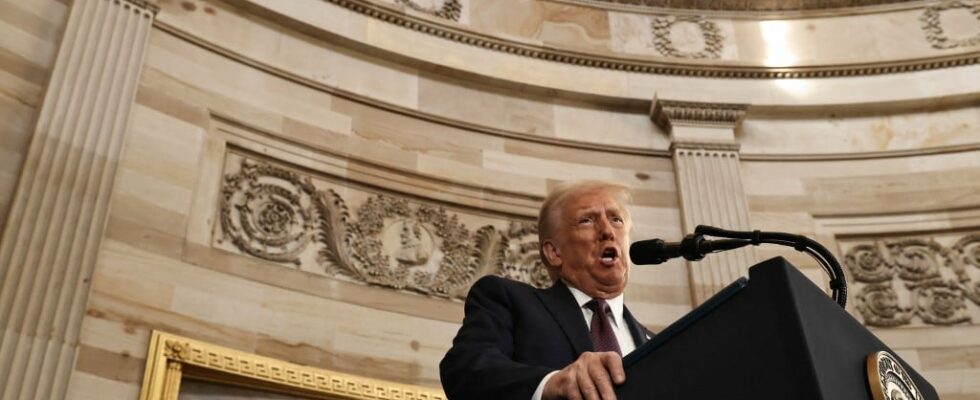It is in a delicate economic context that Donald Trump is regaining his bearings in the White House. The world’s leading economic power once again exceeds its public debt ceiling. To avoid payment default, emergency measures must come into force this Tuesday, the day after the inauguration of the 47th American president.
Janet Yellen, the outgoing Treasury Secretary at the United States Department of the Treasury (the equivalent in France of the Ministry of Economy and Finance) announced Friday January 17 that the debt ceiling, located at 36.1 trillion dollars, did not authorize “new spending”. In his letter to congressional leadersit specifies the exceptional measures put in place to allow the United States to continue to meet its payment deadlines: cessations of certain retirement, health and even disability payments for public employees. Janet Yellen assures, however, “that retirees and public service employees will not be affected by these actions.”
The outgoing Treasury Secretary calls on Congress “to act quickly to preserve the full confidence” of United States creditors. These actions remain temporary and therefore only offer a short respite to the country; the time for Congress to decide to raise the debt ceiling or even suspend it, which it has always done until now.
American debt has been worrying the markets for several years already: in August 2023, the rating agency Fitch notably downgraded the credit rating of the United States by downgrading it from AAA to AA +. In his reportthe agency pointed the finger at “repeated impasses on the debt limit and last-minute resolutions.”
The subject has regularly come back to the table in recent months, failing to cause, at the end of 2024, a budgetary paralysis of the country. Congress finally managed to pass a budget on December 21, valid until March. He had thus narrowly avoided the shutdownin other words the inability for the State to pay for its administration when Congress cannot pass a budget. However, the senators ignored President Trump’s request: to raise the debt ceiling, or even abolish it.
This debt limit specific to the United States sets the maximum borrowing capacity of the country. If they exceed this ceiling, the United States would risk a payment default which would have serious consequences for its economy. Congress has always ended up raising the cap until now, in total more than 78 times since 1960.
Steep increase in debt
To remedy the debt problem, the Trump administration has already planned several actions. During his inauguration on January 20, Donald Trump confirmed the increase in customs taxes by 25% on products from Mexico and Canada from February 1. Scott Bessent, Janet Yellen’s successor at the Treasury, said during his hearing before the Senate on January 16 that the United States would not default on its debt if confirmed, reiterating that the federal government had, in his view, “a big spending problem.”
To slash these, Donald Trump has created a new ministry of “Government Efficiency” which is headed by Elon Musk. The Tesla boss notably reiterated the objective of cutting $2,000 billion, or nearly a third of the federal budget, in a livestream broadcast on his X platform.
But will cutting the federal budget and overtaxing its trading partners be enough to resolve the United States’ debt problem? If the ceiling has been raised until now, today, the American debt is increasing faster than its economy, which makes it “unsustainable” in the long term, according to Jerome Powell, the president of the American Federal Reserve ( Fed), interviewed on CBS News. In a report from January 17, 2025the Congressional Budget Office forecasts that the public debt of the United States, currently 100% of GDP, will reach 118% of GDP in 2035. A percentage that shatters the record of 1946 when, after the war, the debt represented 106% of GDP.
